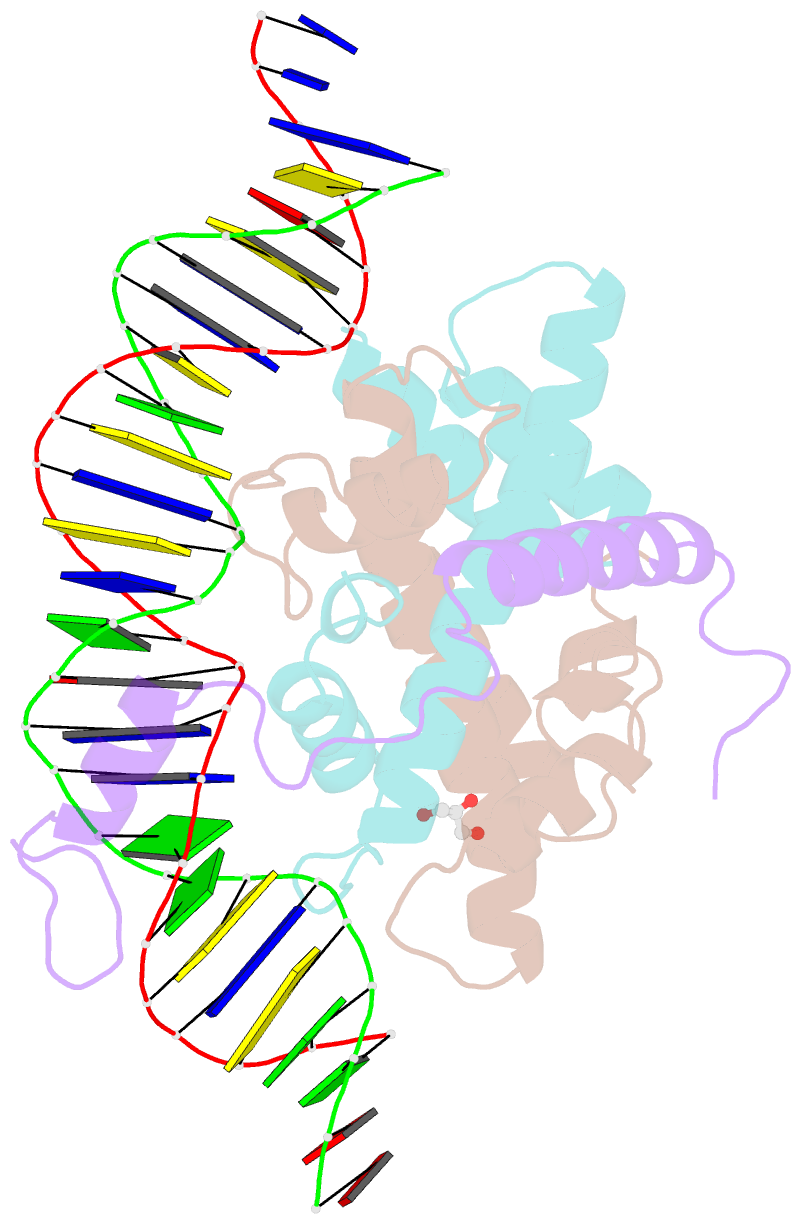Summary information and primary citation
- PDB-id
- 6y37; SNAP-derived features in text and JSON formats;
DNAproDB
- Class
- transcription
- Method
- X-ray (2.2 Å)
- Summary
- Ccaat-binding complex from aspergillus nidulans with ccca DNA
- Reference
- Hortschansky P, Misslinger M, Morl J, Gsaller F, Bromley MJ, Brakhage AA, Groll M, Haas H, Huber EM (2020): "Structural basis of HapE P88L -linked antifungal triazole resistance in Aspergillus fumigatus ." Life Sci Alliance, 3. doi: 10.26508/lsa.202000729.
- Abstract
- Azoles are first-line therapeutics for human and plant fungal infections, but their broad use has promoted the development of resistances. Recently, a pan-azole-resistant clinical Aspergillus fumigatus isolate was identified to carry the mutation P88L in subunit HapE of the CCAAT-binding complex (CBC), a conserved eukaryotic transcription factor. Here, we define the mechanistic basis for resistance in this isolate by showing that the HapEP88L mutation interferes with the CBC's ability to bend and sense CCAAT motifs. This failure leads to transcriptional derepression of the cyp51A gene, which encodes the target of azoles, the 14-α sterol demethylase Cyp51A, and ultimately causes drug resistance. In addition, we demonstrate that the CBC-associated transcriptional regulator HapX assists cyp51A repression in low-iron environments and that this iron-dependent effect is lost in the HapEP88L mutant. Altogether, these results indicate that the mutation HapEP88L confers increased resistance to azoles compared with wt A. fumigatus, particularly in low-iron clinical niches such as the lung.





